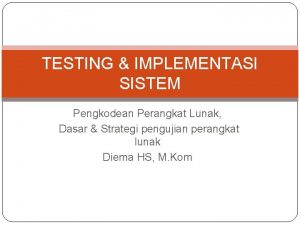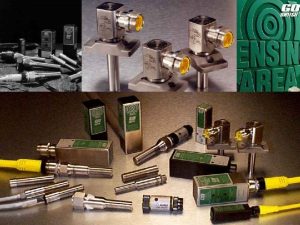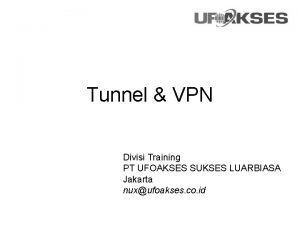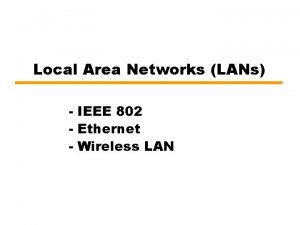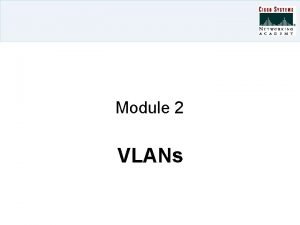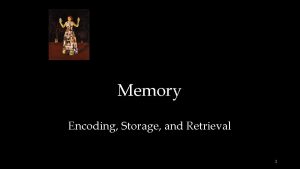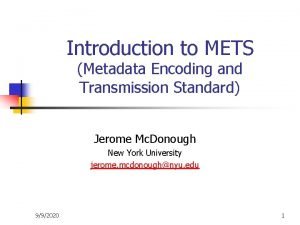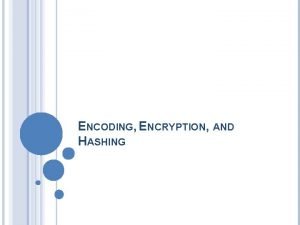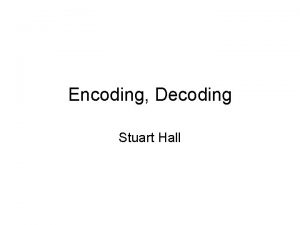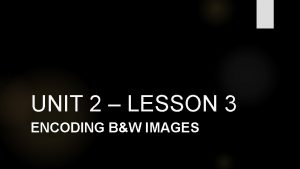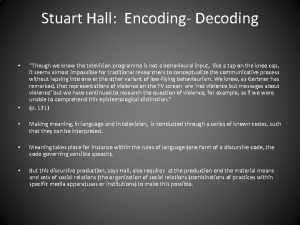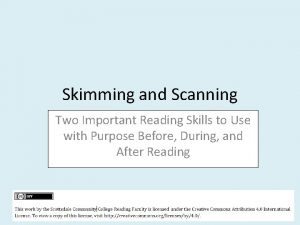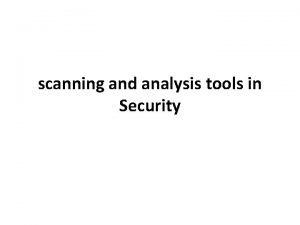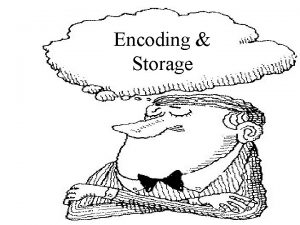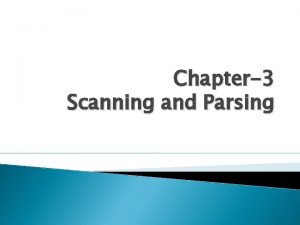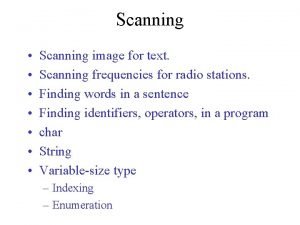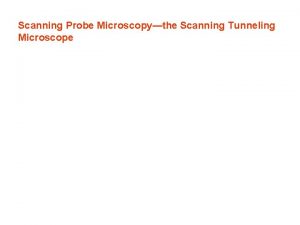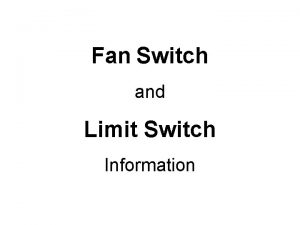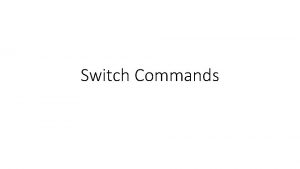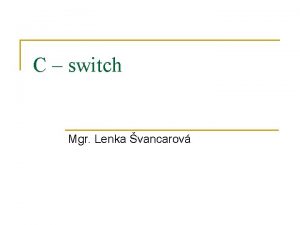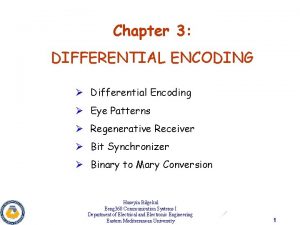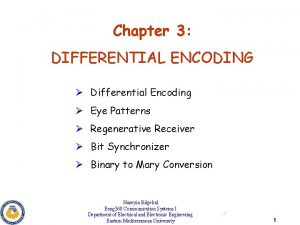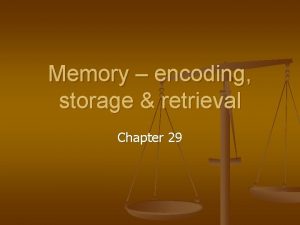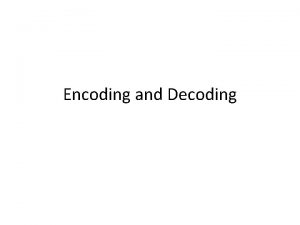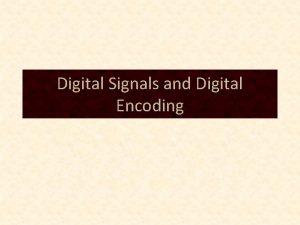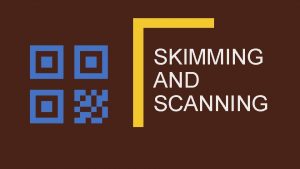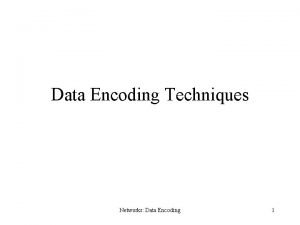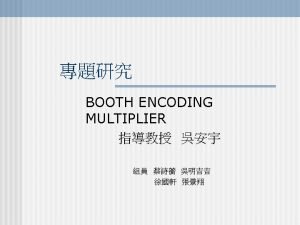Switch Access using Scanning and Encoding Chapter 8





















- Slides: 21

Switch Access using Scanning and Encoding

Chapter 8 n Switch Access using Scanning and Encoding ¨ Mechanics of scanning ¨ Compares different scanning techniques ¨ Considers good practice for designing selection sets

Switch Access Quick Assessment Guide The user can use 4 or 5 switches… n The user can hit 1 or 2 switches… n ¨ Repeatedly with good timing ¨ With good timing ¨ Hold, and then release a switch with good timing ¨ But has difficulty with timing

Assessment Continued n The user can operate the scanner but… ¨ Often selects incorrect items ¨ Writing it unacceptably slow

What is scanning? n n Technique for sequential display of a set of items and selection using a small number of switches Scanning System ¨ Controlled by a switches ¨ Different scanning methods (ex: Row-column) ¨ Different scanning movements (ex: Groups) ¨ Layouts and items for individual users and tasks

Who might use scanning? Severe physical impairments n Control of one or small muscle group n Learning disabilities n People without patience n ¨ Can not use n Keyboard n Mouse n voice

Scanning Methods n Autoscan ¨ Single switch, with automatic start ¨ Users… Control 1 or 2 switches n Good timing to activate switch, but can hold it down n Needs to simplicity of one switch n

Scanning Methods n Userscan ¨ 1 switch, with dwell select ¨ 2 switches ¨ Users… Can control 1 or 2 switches n Can activate, hold and release switch n Impatient, anxious, and stressed waiting to press the switch n Trouble activating the switch with good timing n

Scanning Methods n Step Scan ¨ Single and 2 switch ¨ Users… Can control 1 or 2 switches n Activate and release repeatedly n Can not wait becomes anxious n Learning disabilities n

Matching Scanning Methods to User Skills Different scanning methods demand different control and operational skills n Suggestions for assessing switch activation, release and timing skills n

Demands Control Demands 1 -switch Autoscan 1 -switch Userscan 1 -switch Stepscan Wait HIGH MEDIUM LOW Activate HIGH LOW MEDIUM Hold LOW HIGH LOW Release LOW HIGH MEDIUM Motor Fatigue LOW MEDIUM HIGH Sensory/ Cognition HIGH LOW

Demands 2 -S. Auto 2 -S. User 2 -S. Step Direct User Wait Activate High Med to High Low Low Low Hold Release Low High Med-High Low Med Motor Low-Med Fatigue Sensory/ Med Cognitive

Scanning Movements Simple Scan Movement n Group Scan Movement n ¨ Row-column ¨ Column-row ¨ Nested n scanning (Half-scan) Directed Scan Movement

Other Scanning Techniques & Features n Canceling the scan ¨ Wait for the program to go through the certain number of scan cycles ¨ Cancel buttons at the beginning of rows n Next scan item ¨ ‘Home’ n Scan delay on First item ¨ On fast scan speeds anticipates next item

Introducing Scanning n Prerequisites (Blackstone, 1989) Seating & positioning must facilitate function n Movement, control site, and switch options must be specified n Switch and device must be correctly positioned n The user may need explanation and training in how the scanning works n

Introducing Scanning n Tasks… ¨ Develop motor and visual scanning skills ¨ Develop motor and visual scanning, plus cognitive skills, plus communicative skills

How can scanning accuracy be improved? Seating and positioning n Change the scan speed n Use switch filtering (increase postacceptance) n Adjust the first item n

How can scanning speed be increased? Increase the accuracy n Change scan method n Change scan rate n Change selection set design and layout n Change scanning movement n Use acceleration techniques n

Access with Switches and Encoding n Switch Encoding ¨ Using 1 or 2 switches and an extended version of Morse code ¨ Fast method, user needs to have sufficient memory and sequencing skills A n. B n. C n Space n . (dit) – (dah) -… -. -. . . --

Mouse control for switch users n Scanning directions ¨ Selecting direction from selection set ¨ Rotating Pointer Key combinations n Markers and Hot Spots n ¨ Buttons n for marking locations on the screen Automatic Computer Access

Input Filtering Input acceptance filtering n Repeat filtering n Post acceptance filtering n
 Basic coding test
Basic coding test In a banyan switch micro switch
In a banyan switch micro switch Go switch limit switch
Go switch limit switch Using encoding - mppe128 stateless
Using encoding - mppe128 stateless Switch router access point
Switch router access point Switch access trunk
Switch access trunk Access switch statement
Access switch statement Terminal access controller access control system
Terminal access controller access control system Terminal access controller access-control system
Terminal access controller access-control system Memory encoding techniques
Memory encoding techniques Mets metadata
Mets metadata Encoding encryption and hashing
Encoding encryption and hashing Stuart hall encoding and decoding
Stuart hall encoding and decoding Data encoding and transmission
Data encoding and transmission Encoding marketing
Encoding marketing Encoding b&w images copy and paste
Encoding b&w images copy and paste Stuart hall encoding decoding
Stuart hall encoding decoding Skimming quiz
Skimming quiz Skim scan and detailed reading
Skim scan and detailed reading Skimming skimming
Skimming skimming Disadvantages of skimming and scanning
Disadvantages of skimming and scanning Explain the tools of security analysis
Explain the tools of security analysis
